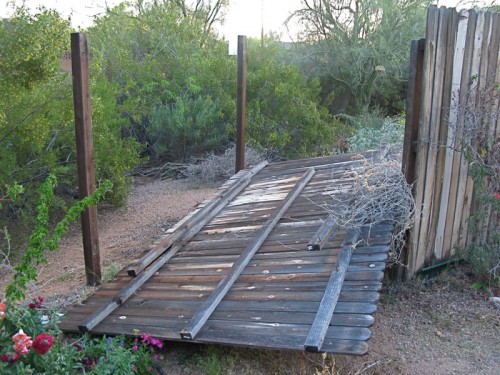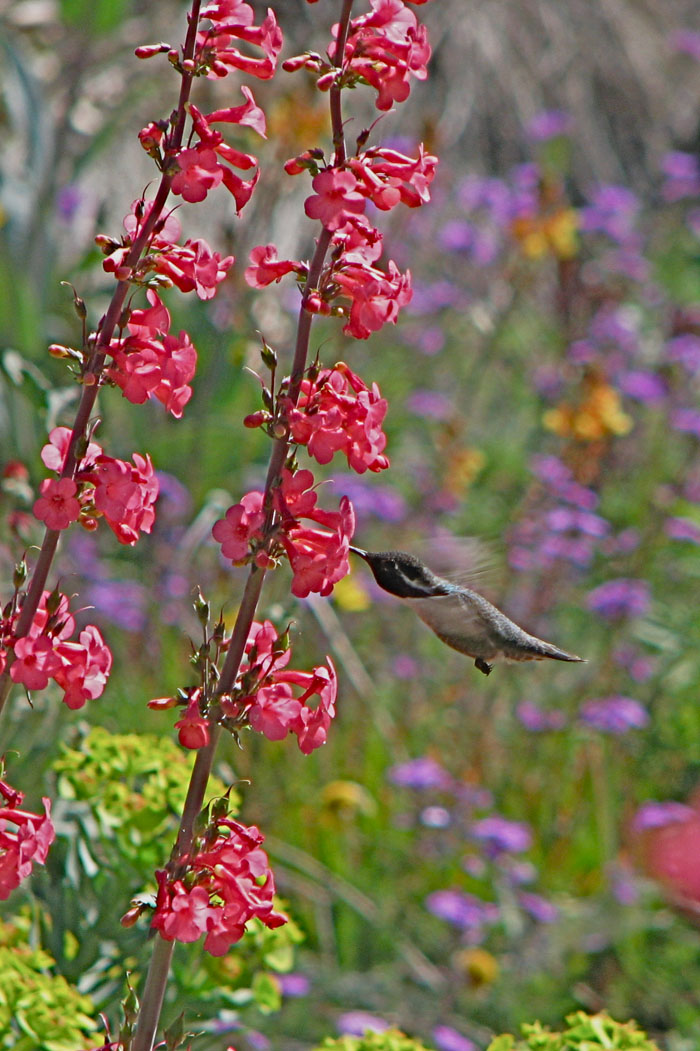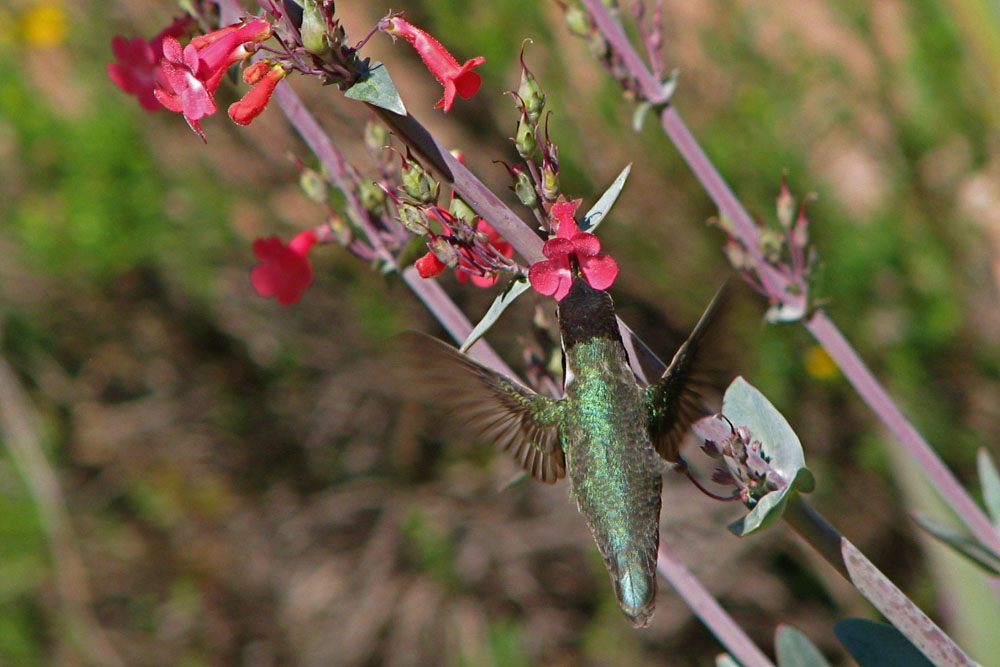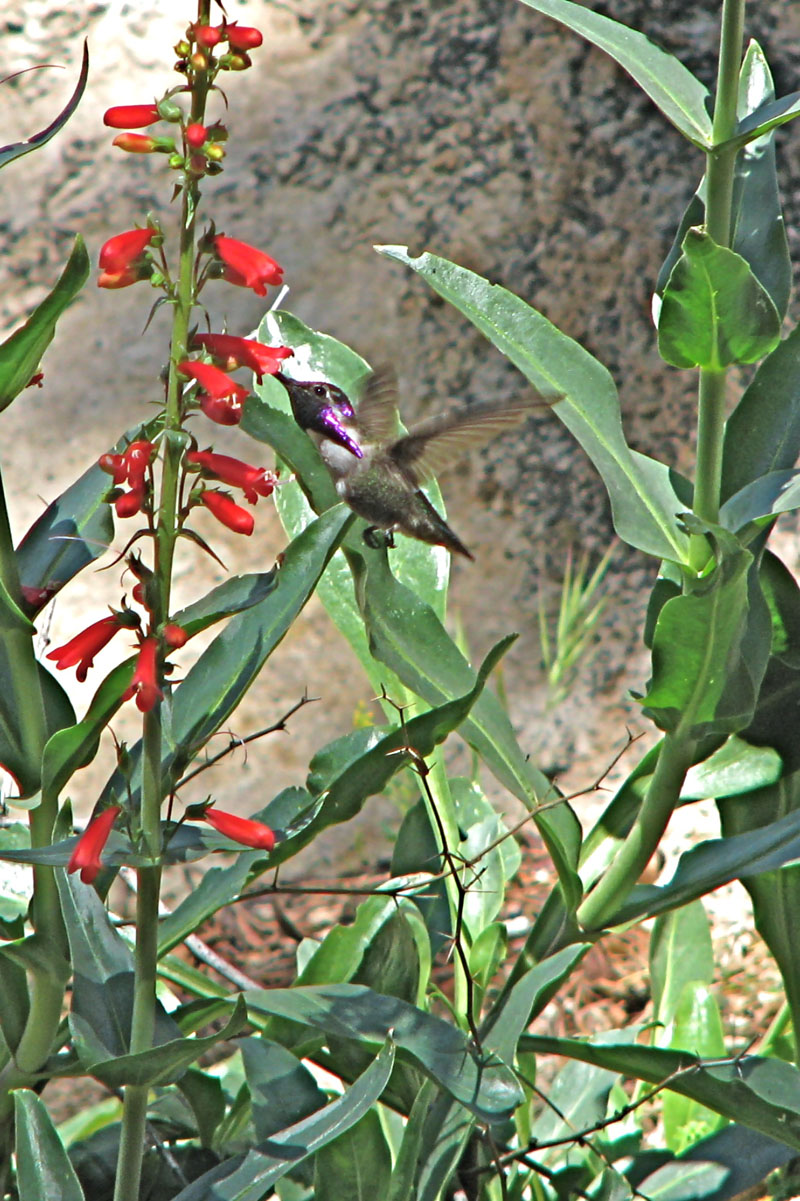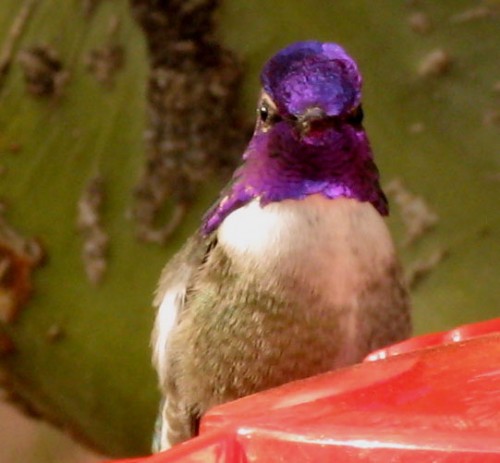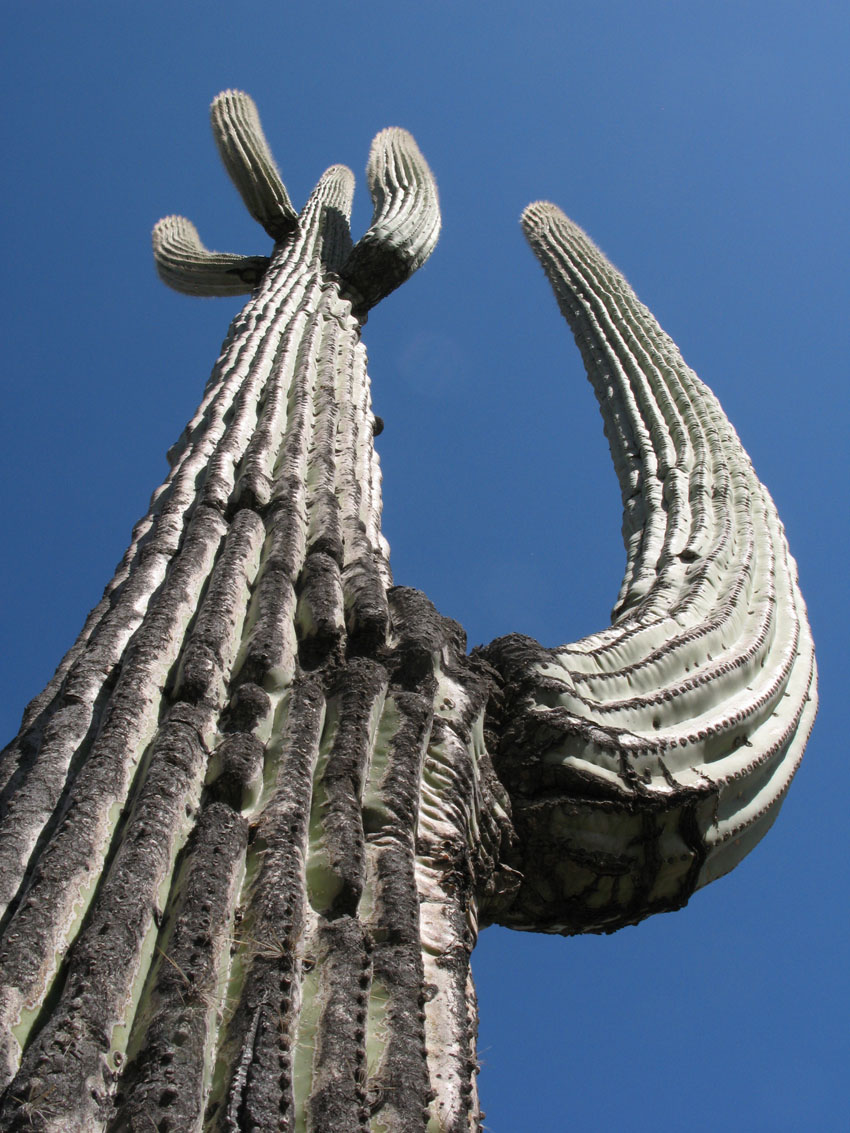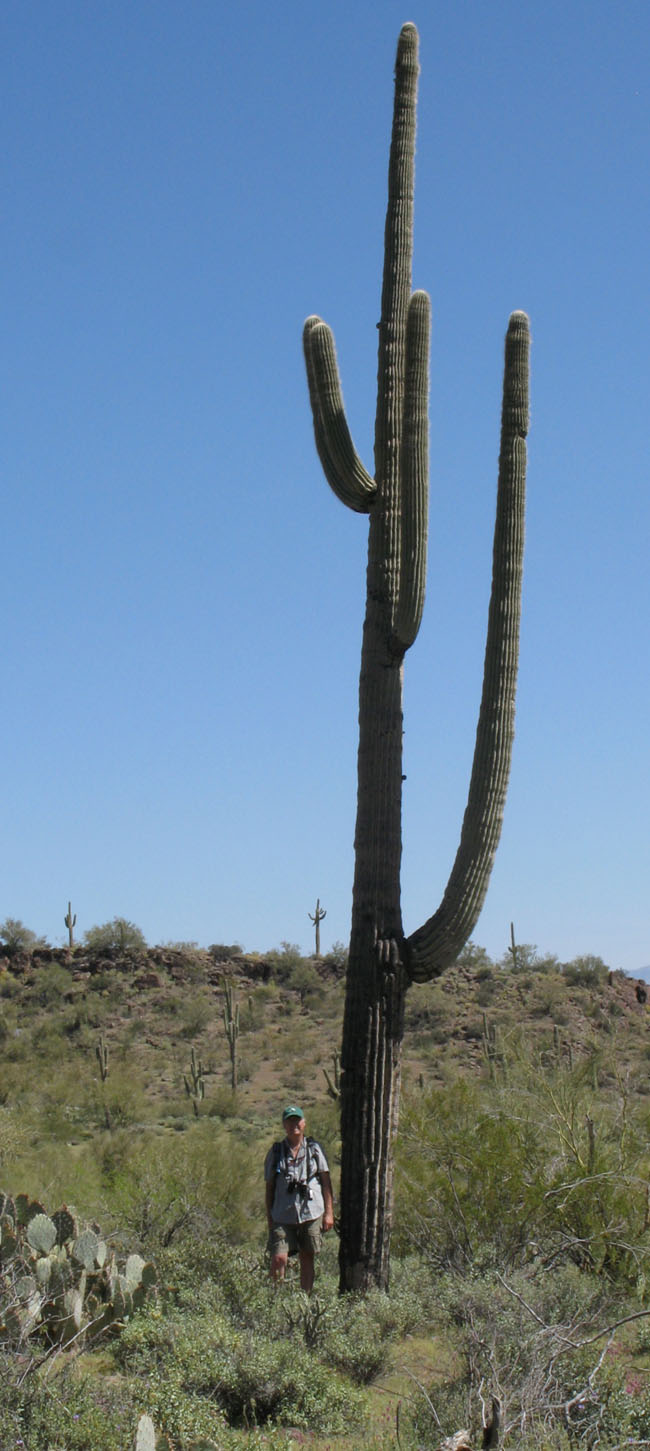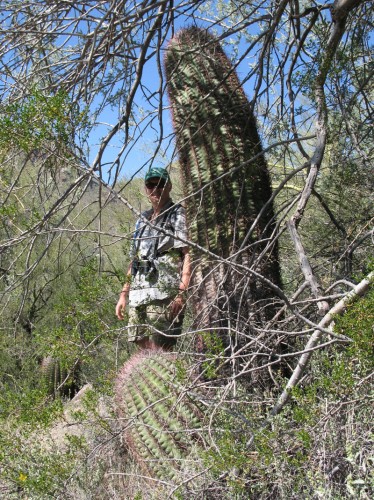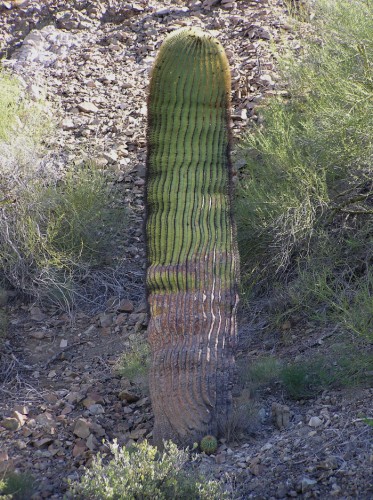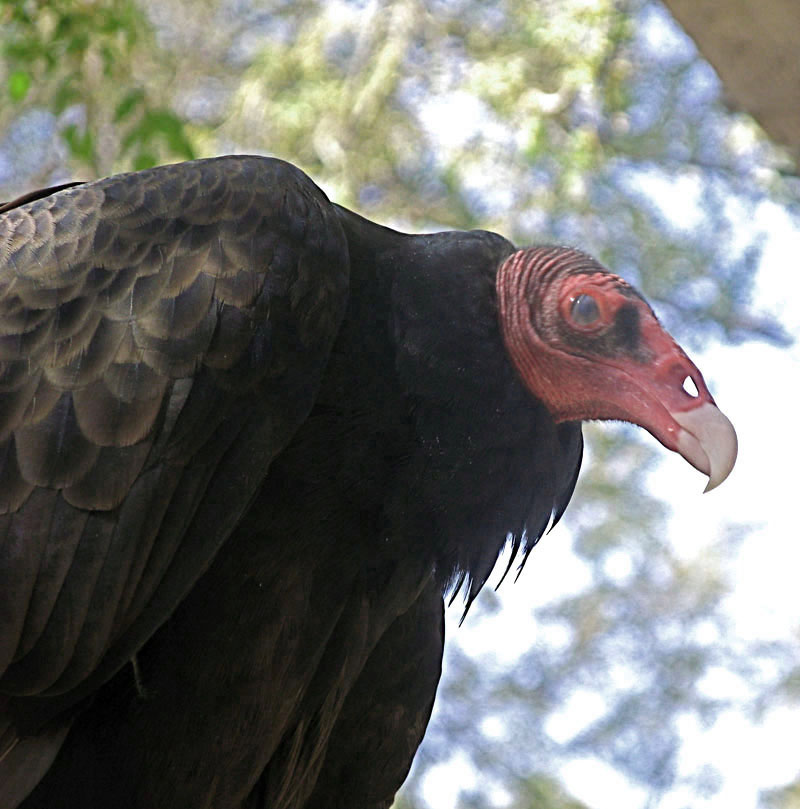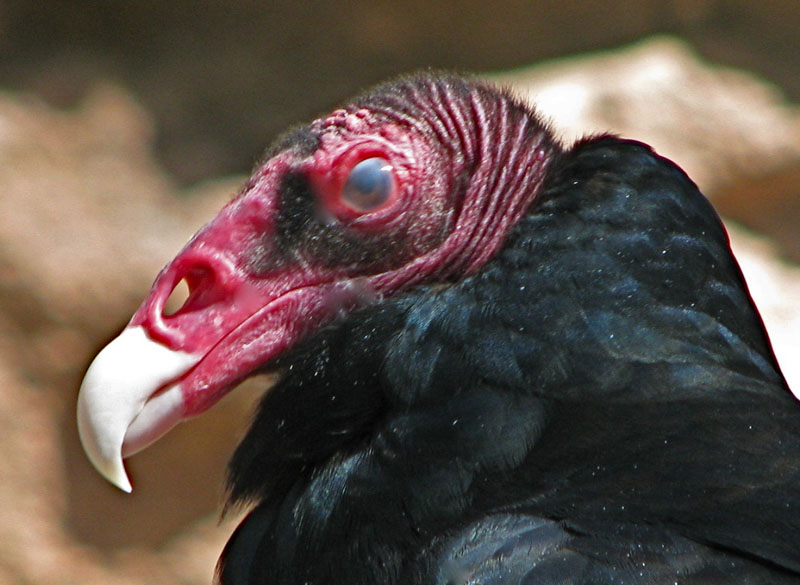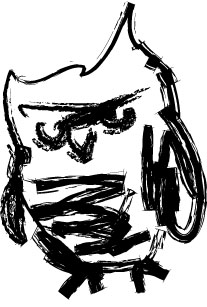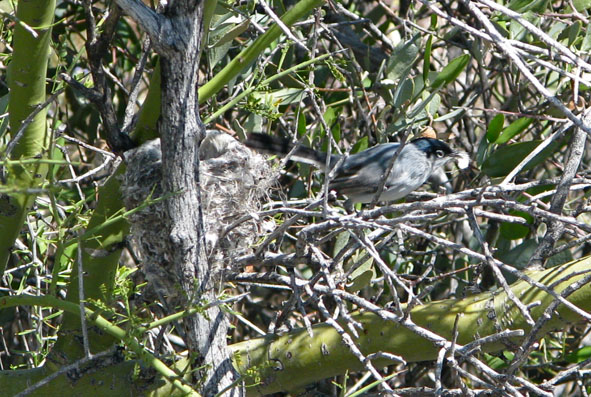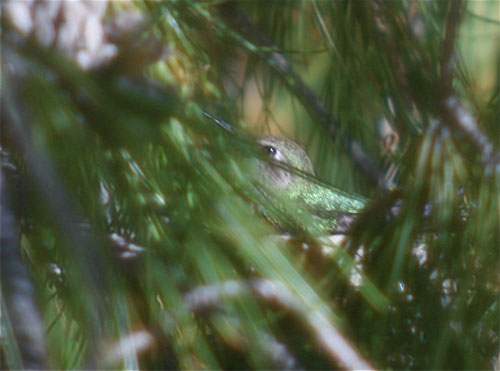Ganskopf collection of small bird imagery: selected owl fetishes
Episode 1
During this session the staff once again permitted me to sketch the objects only with dry media, so I brought graphite pencils and a kneaded eraser, which does not produce erasure pills. This made it necessary to add colors later with watercolor, from memory, since photos are not allowed, either. During the appointment the objects — elevated on a black velvet cushion — stayed on the other side of the table, as did the librarian, who turned them for me if I required to see the back, or a profile. She wore bright purple non-latex gloves, like a medical technician drawing blood, to keep finger oils and sweat off of the surfaces.
The descriptions below are my personal non-technical notes, observations both descriptive and ornithological (to the extent possible), made to assist me in capturing the quality of the surfaces later. The Library Catalog entries for these objects include blurry, low-contrast black-and-white photos, with only brief notations of dimension, and accession date and source where known; very few have these. The uncredited author uses the word “fetish” to refer to all of the smaller owls, probably because of their size and three-dimensional form. There is no actual evidence of ritual use or function. Note: scale of objects is approximate since I was not allowed to touch the objects to obtain measurements. Therefore, dimensions given are maximum in any axis, as stated in the Library Catalog.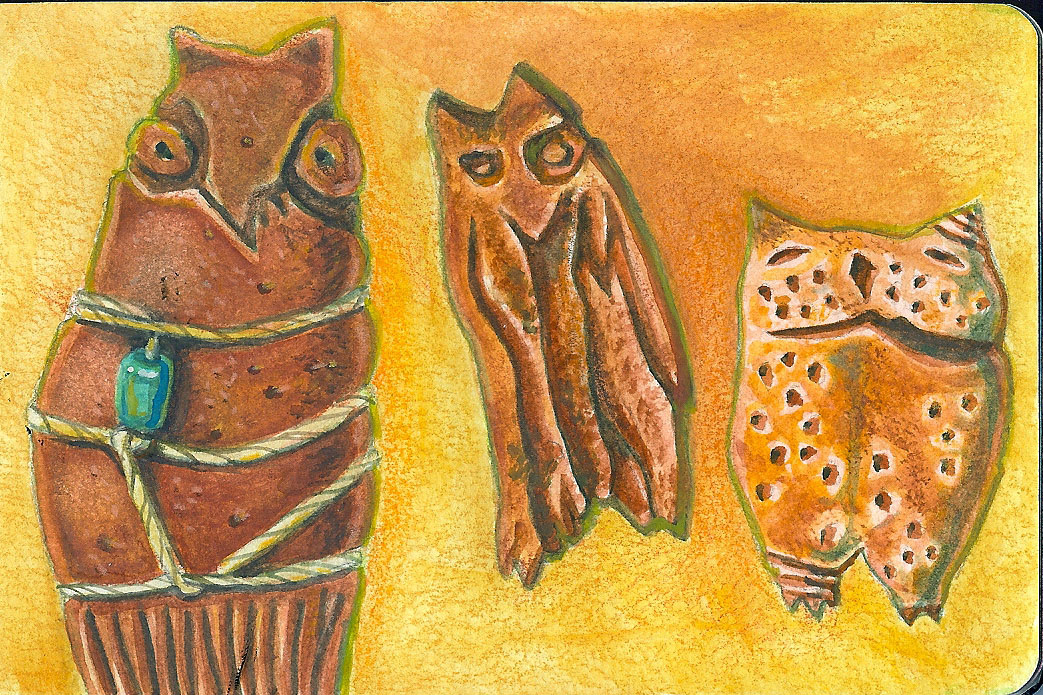
- The “fetish” on the left, GKC/orn926g, is a naturally pitted, tool-altered brown quartzite cobble bound in a jute-like fiber with a cylindrical turquoise-glazed ceramic bead strung on the front. (H: 9.7cm, W: 5.9cm, D: 5.6cm; no provenance) It depicts an “eared” owl, perhaps of the genus Bubo, species unknown, with open eyes. The tail is indicated by parallel grooves, which would have taken some effort to engrave in the hard stone. Tool marks are not discernible. Back unaltered. Bead, modern (? I have seen similar beads in mall bead shops, imported from India.)
- The middle “fetish”, GKC/orn872b, is also an “eared” owl with open eyes, made from tree bark, possibly pine, the natural delaminations and grooves in the bark give the impression of feathery striations. Traces of blueish pigments are visible in the deepest crevices. Back unaltered by maker; shows bore-tracks of pine-infesting insects. (H: 6.2cm, W:3.1cm, D: 2.3cm; no provenance)
- The “fetish” on the right, GKC/orn335f, is terracotta textured while still moist. Also an owl with cranial tufts; partly closed or squinting eyes. One tuft and the opposite foot or leg are marked with concentric grooves. Back has three parallel linear impressions, perhaps to indicate tail feathers. One foot has two talons, the other three. (H: 5.1cm, W: 4.6cm, D: 3.6cm; no provenance).
The fact that these “fetishes” depict “eared”-type owls does not help to pin-point their origins. There are owls with cranial tufts on nearly every continent belonging to, for example, both the large (Bubo) and the small (Scops) genuses.
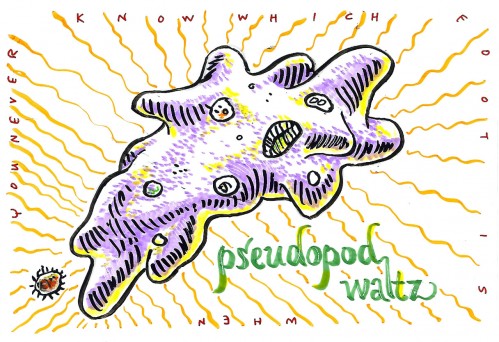 Again, my thanks to the Ganskopf Foundation for allowing me access to the collection in order to illustrate these enigmatic pieces and the permission to reproduce them here, and special thanks to librarian Leyla Laguna. The images here are the property of the Ganskopf Collection and may not be produced without written permission.
Again, my thanks to the Ganskopf Foundation for allowing me access to the collection in order to illustrate these enigmatic pieces and the permission to reproduce them here, and special thanks to librarian Leyla Laguna. The images here are the property of the Ganskopf Collection and may not be produced without written permission.

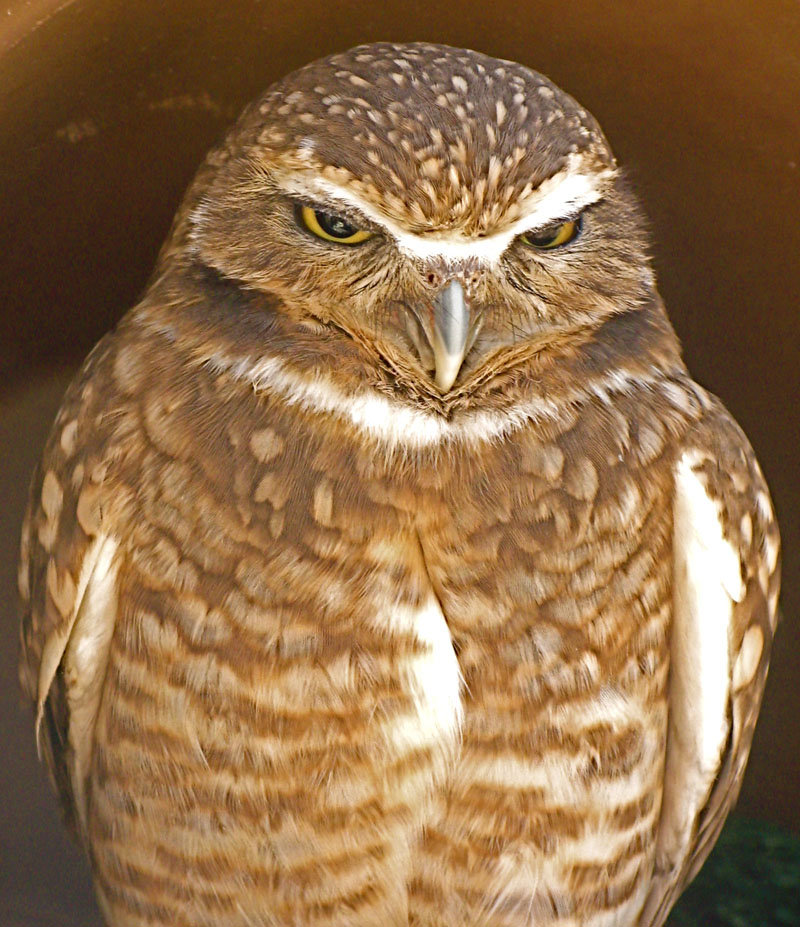
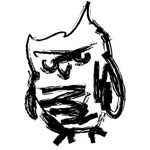
 Allison does not consider herself a wildlife artist,
but an observer who takes notes in clay.
Allison does not consider herself a wildlife artist,
but an observer who takes notes in clay.
